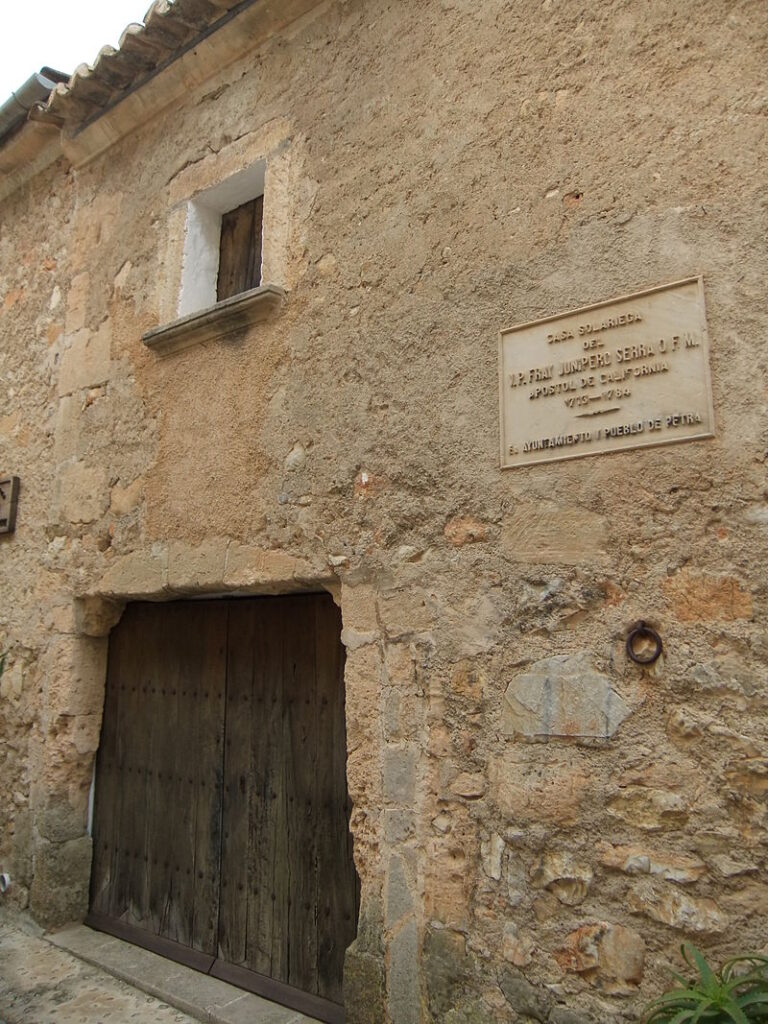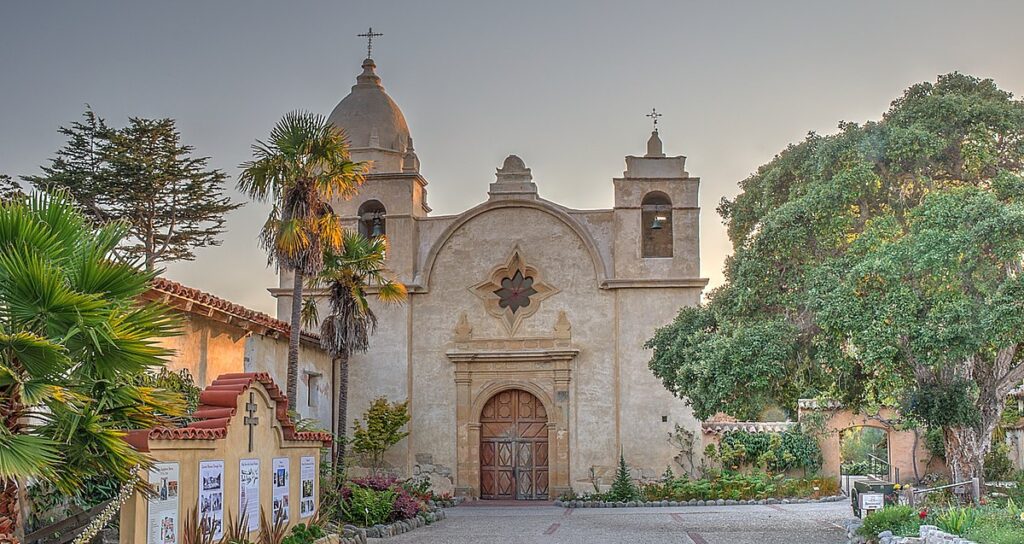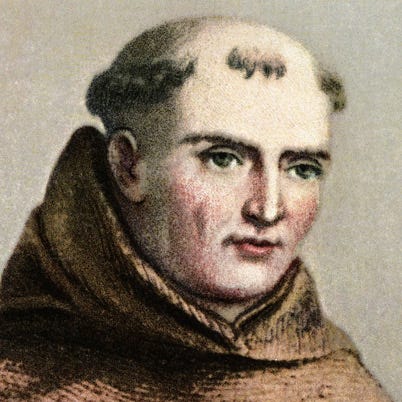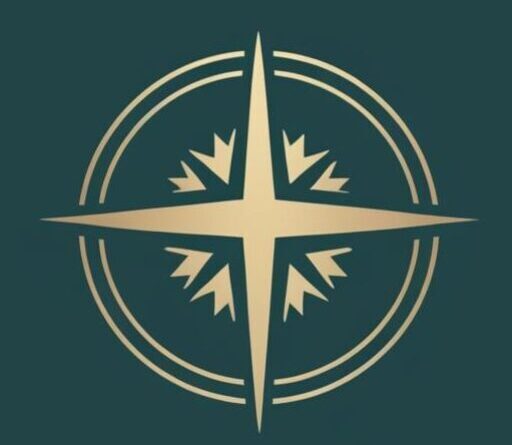Have you ever felt the dust of a long road under your feet and wondered what drives a soul to keep walking, even when the path grows steep? That’s the heartbeat of Saint Junípero Serra, a frail friar whose tireless steps sowed faith in the wilds of California. His life is like a desert wind: it rises in the sunbaked hills of Mallorca, sweeps across oceans and rugged lands, and settles in a chain of missions that still whisper his name. For you, an American Catholic who’s driven past San Diego or prayed in a church born from his vision, come wander this trail with me. Let’s uncover the “Apostle of California,” a man who turned sacrifice into sanctuaries and whose legacy glows under the Golden State’s sky.
The Boy from Petra: A Seed Planted in Mallorca

Junípero Serra was born Miguel José Serra on November 24, 1713, in Petra, a sleepy village on the island of Mallorca, Spain. His parents, Antônio Serra and Margarida Ferrer, were humble farmers—unlettered but rich in piety, their days woven with the rhythms of the soil and the rosary. Little Miguel was baptized soon after birth, and at just two years old, he was confirmed by Bishop Atanasio Esterripa during a rare visit to the island. As a child, he trailed his parents through golden fields, tugging at wheat stalks and dreaming under the Mediterranean sun. His sharp mind shone early—he attended the Franciscan school next to the Convent of San Bernardino, dazzling his teachers with a quick wit and a thirst for learning.
By 16, Miguel felt a call beyond the plow. He enrolled in philosophical studies at the Convent of San Francisco in Palma, and in 1730, he donned the rough gray habit of the Franciscans at the Convent of Santa Maria de Jesus. On September 15, 1731, he took his vows, shedding his baptismal name for Junípero, inspired by Friar Junípero, a companion of Saint Francis known for his simplicity. “I want to echo the Little Poor Man of Assisi,” he once said, his heart already beating for a life of service. He threw himself into theology, ordained a deacon in 1736 and a priest soon after, his brilliance earning him a teaching post in philosophy at San Francisco de Palma by 1743. His sermons stirred souls—eloquent yet humble, they hinted at the preacher he’d become. At the University Lulliana in Palma, he held the chair of Scotist theology, blending rigorous thought with a fire for God’s word.
The Call to the New World: A Voyage of Faith
At 35, Junípero’s life in Mallorca was fruitful—he was a respected scholar, a sought-after preacher, and a guide to young friars. Yet a restlessness stirred within him, a whisper of a greater mission. In 1749, he heard tales of the Americas—lands teeming with souls who’d never heard the Gospel. With his disciple, Friar Francisco Palóu, he resolved to answer that call. “My soul longs to bring Christ where He’s unknown,” he wrote, packing little more than his habit and a breviary. On April 13, they sailed from Málaga, bound for the New World. The crossing was a crucible—storms battered their ship, and Junípero’s leg swelled from an insect bite, a wound that would plague him for life.
They landed in San Juan, Puerto Rico, on October 18, 1749, then reached Veracruz, Mexico, on December 7. From there, they walked—yes, walked—250 miles to Mexico City, Junípero limping but unbowed. In the Sierra Gorda, he plunged into mission work among the Pame Indians, learning their language and crafting a catechism in their tongue. He taught them farming—how to till soil and herd cattle—and built the stone Church of Santiago de Jalpán, a Baroque jewel still standing as a historical monument. Four more churches followed its model, each a testament to his vision. A quirky detail: he’d confess publicly to Palóu before Mass, kneeling in the dust to show his flock the power of humility.
The Apostle of California: Missions in a Wilderness
Junípero’s Mexican years were a proving ground—17 years of preaching, teaching novices at the College of San Fernando, and dodging Apache raids in Texas missions like San Sabas, a task he narrowly escaped when superiors recalled him from danger. In 1767, everything shifted. King Charles III expelled the Jesuits from Spanish territories, and the Franciscans took over the Baja California missions. Junípero, now 54, was named their superior. On April 1, 1768, with 14 companions, he set out for the parched peninsula, establishing his base in Loreto. The heat was merciless, the land barren—locals lived off hunting and fishing, ignorant of the plow. Junípero taught them ceramics and cattle-raising, his hands as calloused as theirs.

By 1769, opportunity beckoned north. With explorer Gaspar de Portolá, Junípero trekked to Alta California, founding San Diego de Alcalá on July 16—the first of nine missions he’d plant. Over the next 15 years, he forged a chain of outposts: San Carlos Borromeo in Carmel (his headquarters), San Antonio de Padua, San Gabriel Arcángel, San Luis Obispo, and more, up to San Francisco de Asís. Each mission was a small Eden—church, school, farm—where he baptized over 6,000 Indians and confirmed 4,000 more. “I’d give my life for these souls,” he vowed, limping miles to reach remote villages. Challenges abounded: diseases decimated converts, soldiers clashed with natives, and tensions flared with colonial officials like José de Gálvez. In 1773, Junípero walked back to Mexico City—600 miles—to plead for better treatment of the Indians, securing reforms from the viceroy.
The Guardian of the Poor: A Life Worn Thin
Junípero’s body bore the cost of his zeal. Asthma choked his lungs, and gangrene gnawed at his leg, yet he pressed on. From 1767 to 1784, he covered 9,900 miles on foot and 5,400 by boat across California—a staggering feat for a man in his 50s and 60s. He faced misunderstandings with military commanders, rebuilt missions razed by native uprisings, and never wavered. In his final years, he retreated to Monterey with Palóu, who chronicled his life as an eyewitness. On August 28, 1784, at 71, Junípero died at San Carlos Borromeo, his last words a prayer as he clutched a cross. “He was a colossus of evangelization,” Palóu wrote, a tribute etched in history.
Buried beneath the mission church, Junípero left a legacy of nine missions that birthed cities—San Diego, Los Angeles, San Francisco—names echoing his Franciscan spirit. He’s hailed as the “Father of the Indians,” a protector who fought for their dignity against colonial greed. Since March 1, 1931, his statue stands in the U.S. Capitol’s Statuary Hall, the only religious figure among America’s founding heroes, representing California.
The Saint of the Golden Coast: Junípero’s Light Today

Junípero was beatified by Saint John Paul II on September 25, 1988, who praised his “apostolic fervor.” Pope Francis canonized him on September 23, 2015, during a U.S. visit, calling him: “An tireless evangelizer of mercy” (Homily, 2015). Celebrated on July 1 (or August 26 by Franciscans), he’s the patron of vocations and California. His missions—San Juan Capistrano, Santa Barbara—draw millions as historical treasures, though debates swirl about colonial impacts. For American Catholics, he’s a bridge: a Spaniard whose faith took root in U.S. soil, inspiring simplicity amid abundance.
The Sierra de Santa Lucia’s highest peak bears his name, a silent sentinel over his labor. “Junípero shows us that a hobbling step can still reach the stars,” wrote Bishop Robert Barron (Barron, 2015). For you, he’s a call to perseverance—what mission might your own dusty road lead you to?
Tracks of a Tireless Pilgrim: Junípero’s Path Unfolded
Let’s trace the tracks Junípero Serra left in the dust—a pilgrimage of grit and grace. Each mark is a cross planted in the earth, a sign of a life poured out. Here’s his journey in strides:
- Birth (November 24, 1713): Born in Petra, Mallorca, to humble, holy parents.
- Franciscan Vows (September 15, 1731): Took the name Junípero, embracing poverty.
- Arrival in Mexico (December 7, 1749): Landed in Veracruz, ready to serve.
- First California Mission (July 16, 1769): Founded San Diego de Alcalá, a new dawn.
- Mission Expansion (1769-1784): Built nine outposts, shaping California’s soul.
- Death (August 28, 1784): Died in Monterey, his mission complete.
- Canonization (September 23, 2015): Named a saint by Pope Francis, a global light.

I’m Jonathan Raeder, scholar of philosophy and the Catholic faith, deeply dedicated to exploring the teachings and traditions of the Church. Through years of study and reflection, I have gained a thorough understanding of Catholic philosophy, theology, and spirituality. My intention is to connect intellectual reflection with lived faith, shedding light on the richness of Catholic thought for all who wish to do so.

